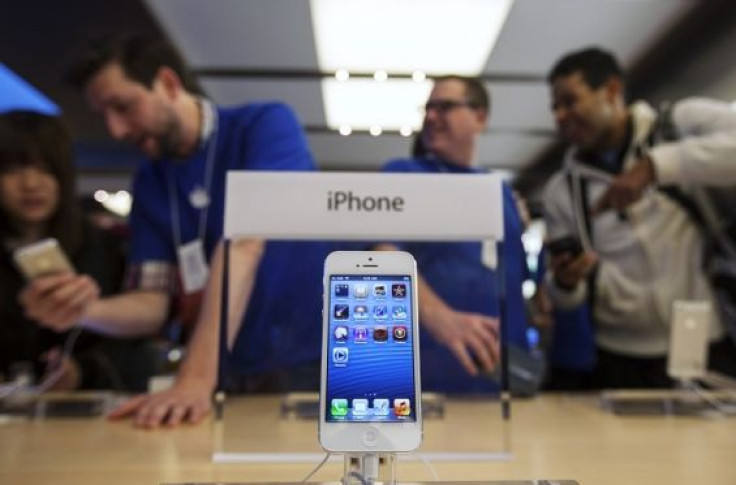Apple iPhone 5 Release Date Imminent in China Following Regulatory Approval For Network Access License

As predicted, it looks like the iPhone 5 will finally arrive in China just in time for the holiday season to begin.
According to the Wall Street Journal, Chinese regulators have approved the iPhone 5 for a "network access license" in the country, which means sales of the phone by Apple's carrier partners in China, including China Telecom and China Unicom, are likely to open up very soon.
"Vendors in China often start selling new handsets within weeks of approval by China's Telecommunication Equipment Certification Center," the Wall Street Journal noted.
During a Nov. 9 interview held during the Communist Party's 18th Party Congress in Beijing, China Telecom Chairman Wang Xiaochu said his company hoped to start selling the iPhone 5 by early December, if not sooner than that. Meanwhile, China Unicom's Chairman Chang Xiaobing was less optimistic of his company's ability to sell the iPhone 5 in November or December, but that was when his company was still waiting for the Chinese government to approve their license to sell Apple's phone in China.
"We hope to offer it this year, but what I say doesn't matter," Chang said at the time.
With a network access license, however, all of these worries can finally be laid to rest. In two separate posts on its website, the Chinese government announced approved licenses for China Telecom and China Unicom to begin selling the iPhone 5.
China is rarely ever one of the first countries to receive a new Apple product, but considering how the country accounted for 16 percent of the company's overall revenue last quarter ($5.7 billion), Apple has every reason to expand its presence in the rapidly developing country by getting its products approved by regulators sooner rather than later. Any more waiting, and analysts believe that many impatient Chinese customers would eventually, willingly switch to Google's Android platform.
More than 50 percent of Apple's overall revenue in Q4 2012 came from the iPhone, and the company's flagship device may even assume more share of revenue with the iPhone 5, which has helped Apple's iOS surpass Android as the most-used platform again. In China, Apple's second-largest market, the phone is expected to be a major hit.
The iPhone 5, Apple’s sixth-generation smartphone, is 18 percent thinner than its predecessor (the iPhone 4S) at just 7.6mm, and is 20 percent lighter than the 4S at 112 grams. The iPhone 5 features a bigger 4-inch screen with a 16:9 aspect ratio for watching videos in full widescreen, and Apple has again made its new in-cell display a Retina Display, with a screen resolution of 1136 x 640 screen and a density of 336 ppi.
The iPhone 5’s screen, according to an extensive analysis by Amherst, N.H.-based DisplayMate, is actually a “significant improvement” over the smaller screens in the iPhone 4S and 4 and is also substantially brighter and more accurate than the screen in Samsung’s Galaxy S3, which many consider to be the greatest rival to Apple and the iPhone 5. Read the full lab comparison here.
The iPhone 5 is also the first Apple phone to feature the high-speed Long-Term Evolution, or LTE, network. Currently, the global LTE carriers supporting this phone include AT&T, Bell, Sprint, Verizon, Telus, Deutsche Telekom, Telstra, EE and SingTel -- as well as a number of regional carriers like Cricket, C Spire, Nex-Tech Wireless, MTA Solutions, nTelos and a slew of others.
Customers are not charged extra for the LTE feature, as the chip is included in all phone models, but due to complications with LTE frequencies, iPhones purchased on one network won't work on another's LTE network when unlocked. In other words, if you buy an unlocked AT&T iPhone 5 in the U.S., it still won't work on Verizon's or Sprint's LTE networks.
The iPhone 5 is all about speed; in addition to support for the LTE network, the iPhone 5 also features a custom-built A6 processor, which actually boasts more than twice the overall processing performance of any iOS device that has come before it, including the third-generation iPad, as well as a newly enhanced camera infrastructure and the new 8-pin Lightning dock connector. The iPhone 5 is powered by iOS 6, which features more than 200 new features for the iPhone, iPod Touch and iPad, including several enhancements to its virtual personal assistant, Siri, the handy application for movie tickets and coupons called Passbook and the completely redesigned -- albeit half-baked -- Maps application from Apple.
Apple sells the iPhone 5 in two color combinations -- black and slate, or white and silver -- and at three different storage capacities: The cheapest iPhone 5 comes with 16 GB of space and sells for $199, and after that, it’s $299 for 32 GB and $399 for 64GB. Apple will likely sell the phone at a slightly more expensive price point in China, as it does with several other countries in Europe and South America.
Apple sold 26.9 million iPhones in Q4 2012, and with supply finally meeting demand for the iPhone 5, Apple is expected to sell millions more in Q1 2013.
© Copyright IBTimes 2024. All rights reserved.












